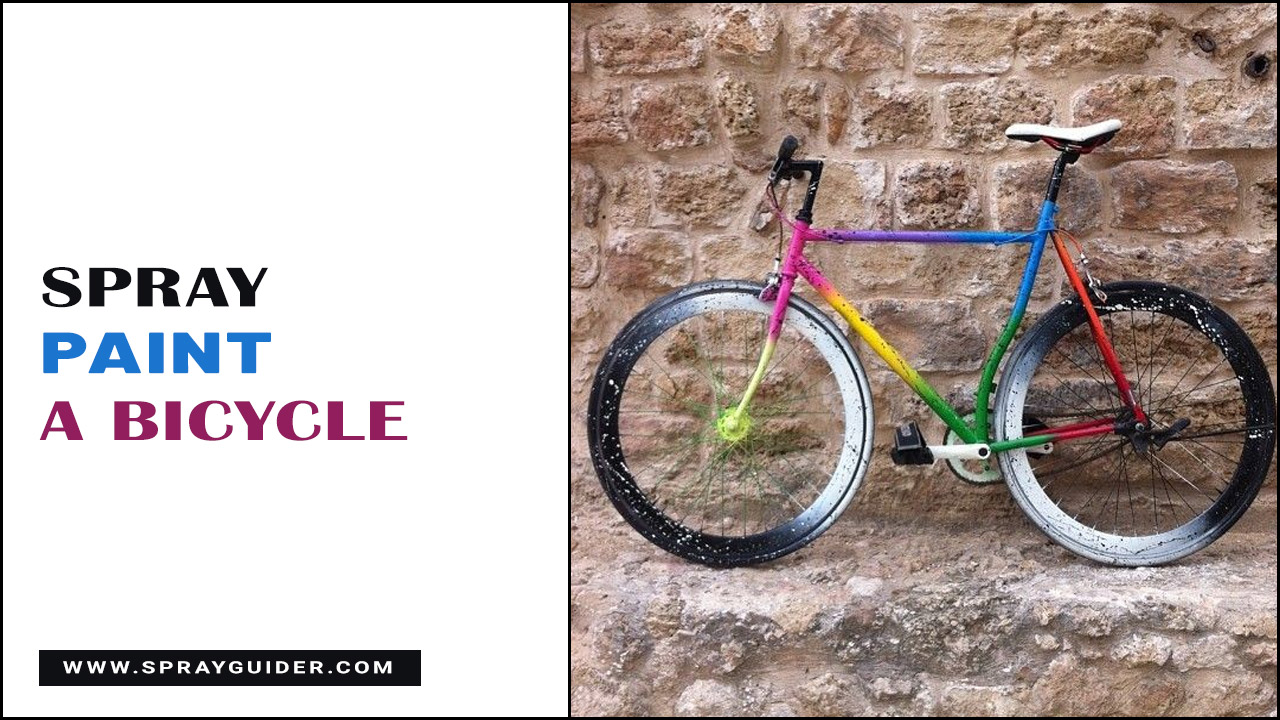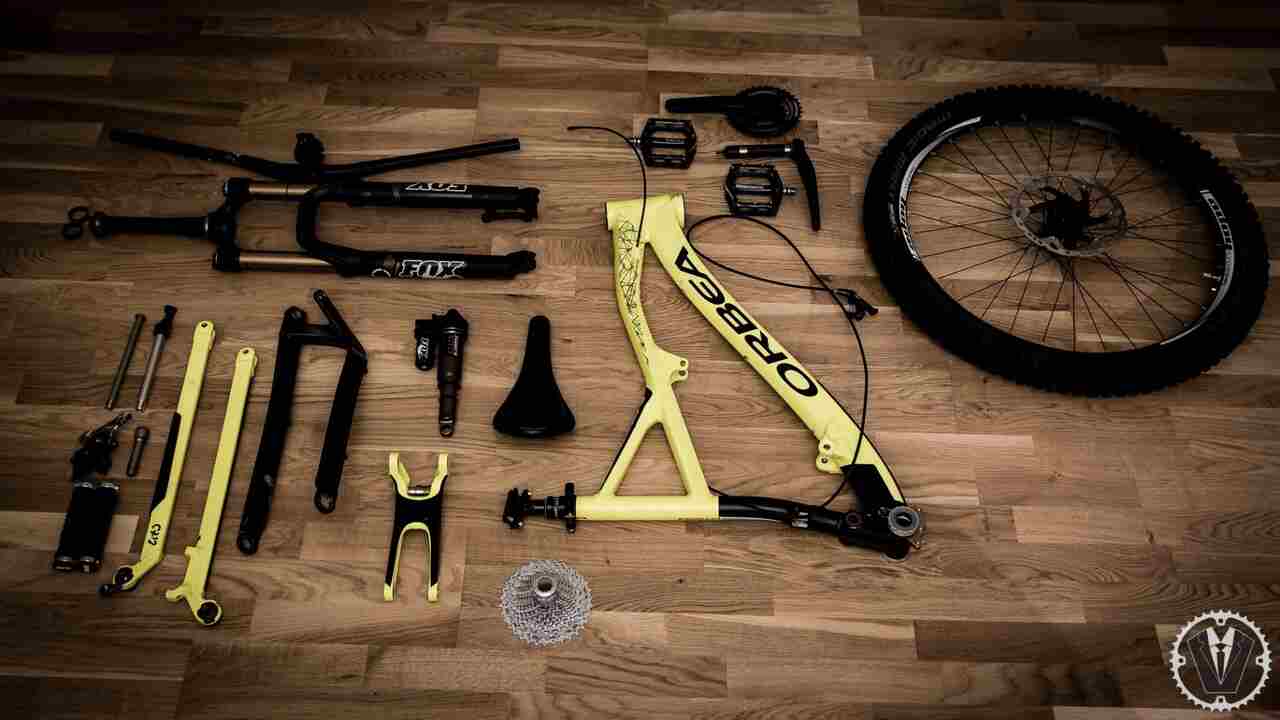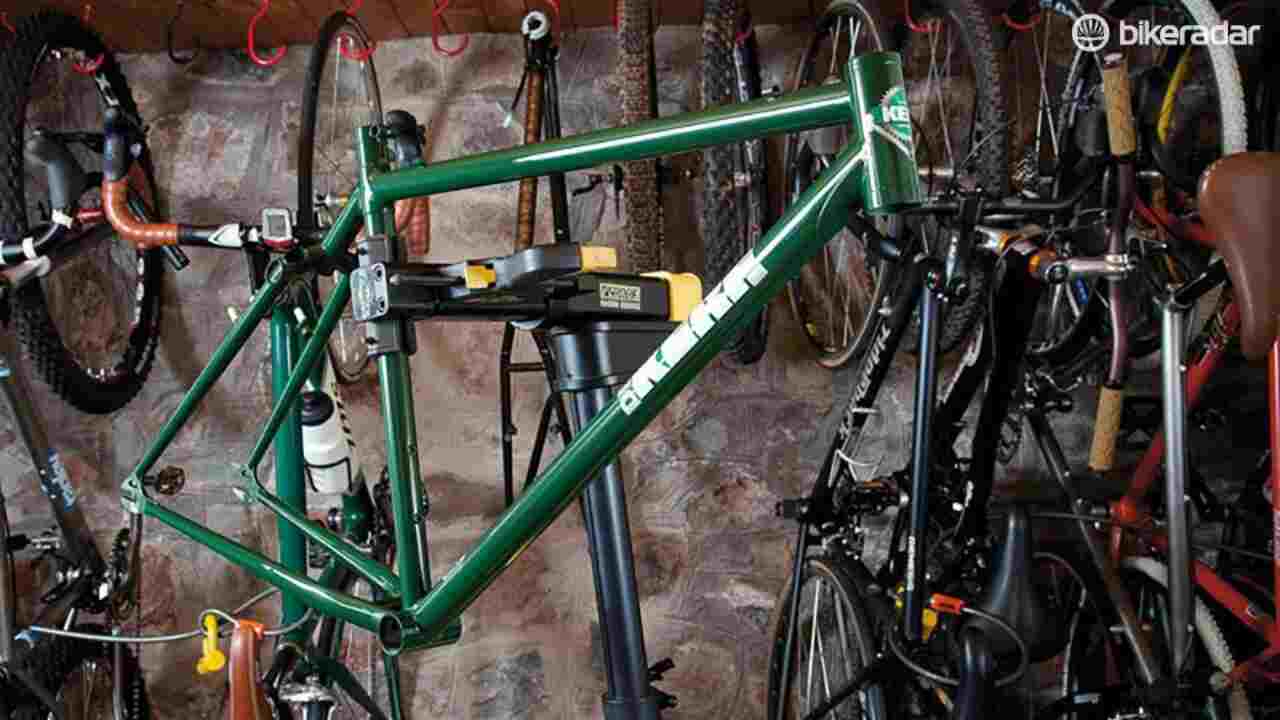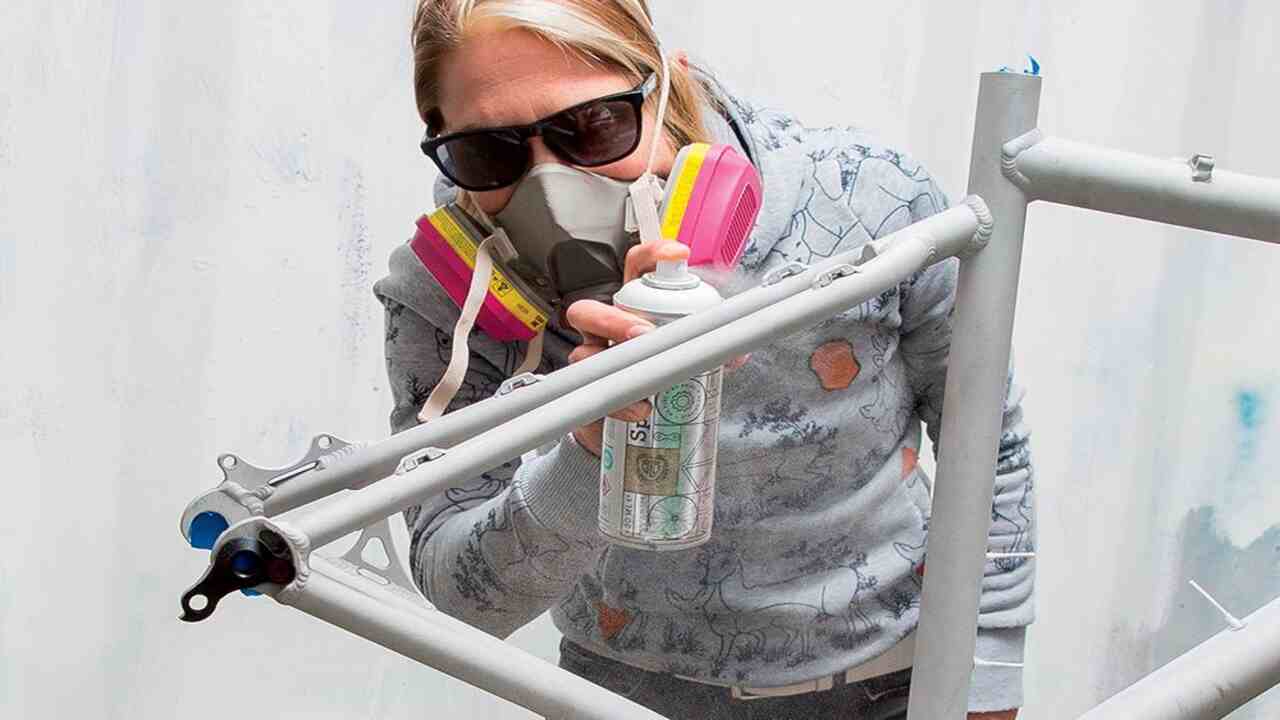Spray painting a bicycle can be a fun and creative way to give your bike a new look. However, the process can be scary and overwhelming for those who have never done it.
That’s why we’ve put together the ultimate guide to spraying a bicycle, complete with instructions, tips, and tricks to help you achieve a professional-looking finish. Whether you want to add a pop of color to your commuter bike or create a custom design on your mountain bike, this guide has you covered.
We’ll take you through everything you need to know, from choosing the right paint and primer to building and painting your bike. We’ll also cover essential safety precautions to remember when working with spray paint and common mistakes to avoid. You can transform your bike into a work of art that reflects your unique style and personality.

How To Use Spray Paint A Bicycle For A Professional Finish

Spray painting a bicycle can be a fun and cost-effective way to give it a fresh new look. However, to achieve a professional finish, there are some steps you should follow. First, clean and sand the bike’s surface to ensure the paint adheres properly. Next, apply a primer to create a smooth base for the paint. Once the primer is dry, use your chosen paint color in thin, even coats.
Allowing each coat to dry completely is essential before applying the next one. Finally, finish with a clear coat to protect the paint and give it a glossy finish. By following these steps and taking time, you can achieve a professional-looking paint job on your bicycle.
Disassembling The Bicycle

Disassembling the bicycle is an essential step before spray painting it. Start by removing accessories or components that may interfere with the painting process, such as the seat, pedals, and handlebars. Use appropriate tools to loosen and remove these parts, not damaging them in the process.
It may be helpful to take photos or note how the bicycle is assembled before disassembling it to ensure a smooth reassembly later. Once the bike is fully disassembled, you can prepare it for spray painting.
Cleaning The Bicycle Frame
Before you start spray painting your bicycle, it’s essential to clean the frame thoroughly. This will ensure the paint adheres properly and results in a smooth finish. First, remove accessories or components from the edge, such as the wheels, seat, and handlebars. Use a mild detergent or bike-specific cleaner to remove dirt, grease, or grime. You can use a soft brush or sponge to scrub the frame gently.
Rinse off the cleaning solution with water and allow the structure to dry completely before applying any paint. Cleaning the bicycle frame will help you achieve professional-looking results when spray painting your bike.
Prepare The Bike For Painting

To ensure a smooth and flawless finish, preparing the bike before painting correctly is essential. Start by thoroughly cleaning the bike to remove any dirt or grime. Next, use fine-grit sandpaper to create a rough surface for the paint to adhere to. Remove any rust or dents and fill in imperfections with putty. Finally, mask off any areas you do not want to be painted, such as the seat post or brakes.
Apply A Primer To The Bike
To achieve a professional finish when you spray paint a bicycle, it’s essential to apply a primer. Start by choosing the appropriate primer for your bike’s surface, whether metal, plastic, or carbon fiber. Before using the primer, make sure to clean the bike thoroughly.
Apply thin and even coats of the primer, allowing each coat to dry completely before adding another. For a smooth finish, lightly sand the primed surface with fine-grit sandpaper before moving on to spray paint.
Apply Even Coats Of Paint
To achieve a professional finish when spray painting a bicycle, it’s important to apply even coats of paint. Begin by cleaning and sanding the bike to create a smooth surface for the paint to adhere to. Choose the right spray paint for your motorcycle, considering the type of bike and the desired finish.
Apply the paint in thin and even coats, allowing each coat to dry before applying the next. Use masking tape to protect areas you don’t want to be painted, and finish with a clear coat to protect against scratches and fading.
Essential Tools And Materials For Spray Painting

When spray painting a bicycle, having the right tools and materials is vital to ensure a successful and professional-looking finish. By having these essential tools and materials ready, you can ensure a smooth and successful spray painting process for your bicycle. Here are some basic tools and materials you will need:
- Spray Paint: Choose a high-quality spray paint designed explicitly on metal surfaces. Look for paint that is durable, weather-resistant, and available in a variety of colors.
- Primer: Applying a primer before painting can help improve adhesion and create an even base coat. Choose a primer that is compatible with your chosen spray paint.
- Sandpaper: Use sandpaper to lightly sand the surface of the bicycle frame before painting. This helps remove any existing paint or rust and creates a smooth surface for the new paint to adhere to.
- Masking Tape: Use masking tape to cover any areas of the bicycle that you do not want to be painted, such as the handlebars, seat posts, or gears.
- Drop Cloth Or Newspaper: Lay down a drop cloth or old newspapers to protect your work area from overspray.
- Gloves And Safety Goggles: Protect your hands and eyes by wearing gloves and safety goggles while spray painting.
Eliminating Old Paint and Rust
To achieve a smooth and flawless finish when spraying a bicycle, eliminate old paint and rust from the bike frame. Use sandpaper or a wire brush to remove the old paint and rust. Afterward, wipe down the frame with a damp cloth to remove dust or debris. For stubborn rust spots, apply a rust remover.
Don’t forget to cover areas you don’t want to paint with painter’s tape, such as the handlebars or head tube. Lastly, ensure to sand away any drips or uneven areas before applying a new coat of paint.
Safe Removal Techniques
To safely remove old paint and rust from a bicycle, following these techniques is essential. Spray paint the bike in a well-ventilated area or outdoors to avoid inhaling fumes. Wear a mask for protection against harmful particles. Dispose of old paint and rust according to local regulations. Use a wire brush or sandpaper to gently remove the old paint and rust without damaging the bike frame. After removal, thoroughly clean the bike frame for a fresh look.
Ensuring A Smooth Finish

Apply a thin and even primer layer to the bike frame to achieve a smooth finish when spray painting your bicycle. Allow the primer to dry completely before moving on to the next step. Ensure the spray paint is adequately mixed by shaking the can well. Hold the can about 6-8 inches from the frame and apply the paint in short, sweeping motions. For a professional-looking result, apply multiple thin coats.
Priming Your Bicycle For Transformation
To ensure a smooth and durable paint job, it is crucial to prime your bicycle before applying any color. Start by choosing a high-quality primer that suits the material of your bike frame, such as aluminum or steel. Apply the primer evenly to the entire structure using long, even strokes, creating a solid base for the paint.
Allow the primer to dry completely before moving on to the next step. Lightly sand the primed surface with fine-grit sandpaper to create a smooth foundation for the paint. Before applying the spray paint, remove any dust or debris from the frame for the best finish.
Selecting The Right Spray Paint For Your Bicycle
When choosing spray paint for your bicycle, consider the desired finish – glossy, matte, metallic, or textured. Opt for a spray paint specifically formulated for metal surfaces. Find a color that complements your bike’s style and personal preference. Ensure you select a high-quality brand by reading reviews or consulting experts. Consider applying a clear lacquer as a final coat for added protection and shine.
Factors To Consider In Paint Selection

When selecting paint for your bicycle, there are several factors to consider. Firstly, check if the spray paint is compatible with your bike’s frame material, whether aluminum, steel, or carbon fiber. Additionally, consider the paint’s weather resistance and durability.
Opt for a color that dries quickly to prevent dust or debris from sticking to the surface. Look for good coverage and a practical spray pattern for easy application. Lastly, choose a paint that allows easy touch-ups and repairs in case of scratches or chips.
Conclusion
To summarize, spray paint on a bicycle requires careful preparation and execution to achieve a professional finish. You can transform your bike into a work of art by disassembling and preparing the frame, applying a primer, and then applying even coats of paint.
It’s essential to have the right tools and materials for the job and eliminate any old paint and rust before starting the painting process. Additionally, selecting the right spray paint and ensuring an even coat are crucial steps in achieving a flawless result. With patience and attention to detail, you can give your bicycle a new look that will turn heads wherever you ride.
Frequently Asked Questions
1.Can You Use Spray Paint On The Bike Frame?
Ans: Yes, spray paint can be used on a bicycle frame. Before painting, it’s essential to clean and sand the surface for better adhesion. Applying a primer designed for metal will help the paint adhere properly. Remember to use multiple thin coats for an even and professional finish.
2.Do You Need A Primer To Spray Paint A Bike?
Ans: Using primer when spray painting a bike is not always necessary, but it can enhance adhesion and durability. A primer is recommended if the motorcycle has rust or bare metal spots. Before applying the paint, you can choose between spray paint with built-in primer or a separate primer.
3.What Kind Of Paint Can You Use On A Bicycle?
Ans: For a professional finish, it is recommended to use spray paint specifically made for metal surfaces. Enamel spray paint provides durability and a glossy finish. Look for brands like Rust-Oleum, Krylon, and Montana designed to withstand weather conditions and UV rays.
4.How Should I Prepare The Bike Before Applying Spray Paint?
Ans: To ensure a professional finish, thoroughly clean the bike with soap and water to remove dirt. Then, create a rough surface by sanding it. Use masking tape or newspaper to protect areas you don’t want to be painted. Finally, apply a primer coat for better adhesion and durability.
5.What Are Some Common Mistakes To Avoid When Spray Painting A Bike?
Ans: Common mistakes to avoid when spray painting a bike include not correctly cleaning and sanding the bike, spraying too close or in a single direction, skipping using primer or clear coat, and painting in unfavorable conditions like dust, wind, or humidity.
Meet Allen Yu, the Spray Guru behind Spray Guider. With a passion for transforming rides into rolling works of art, Allen Yu specializes in Bike and Car Sprays. Unleash your vehicle’s potential with expert tips and creative inspiration. Elevate your ride with Allen Yu—because every spray tells a story!
